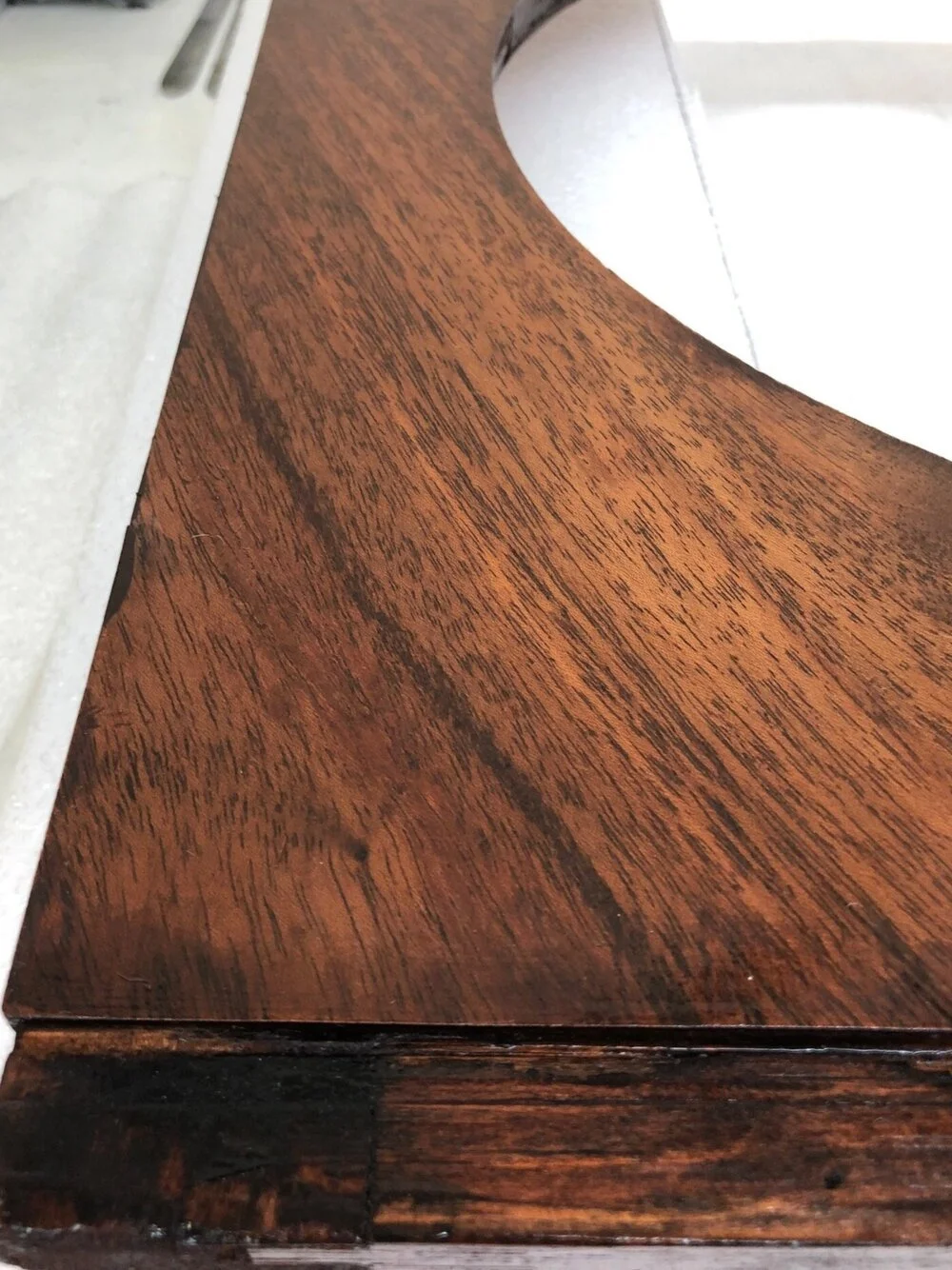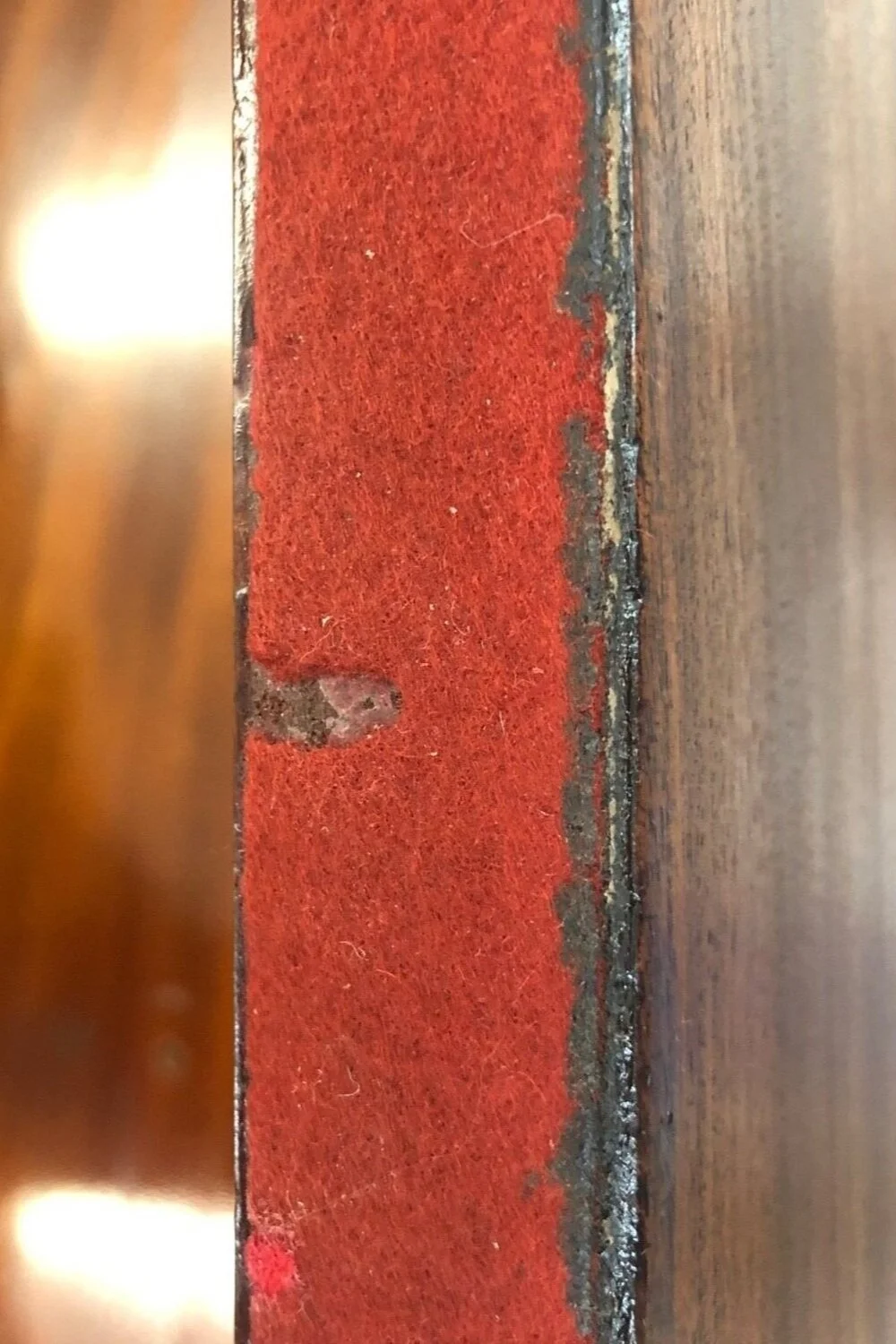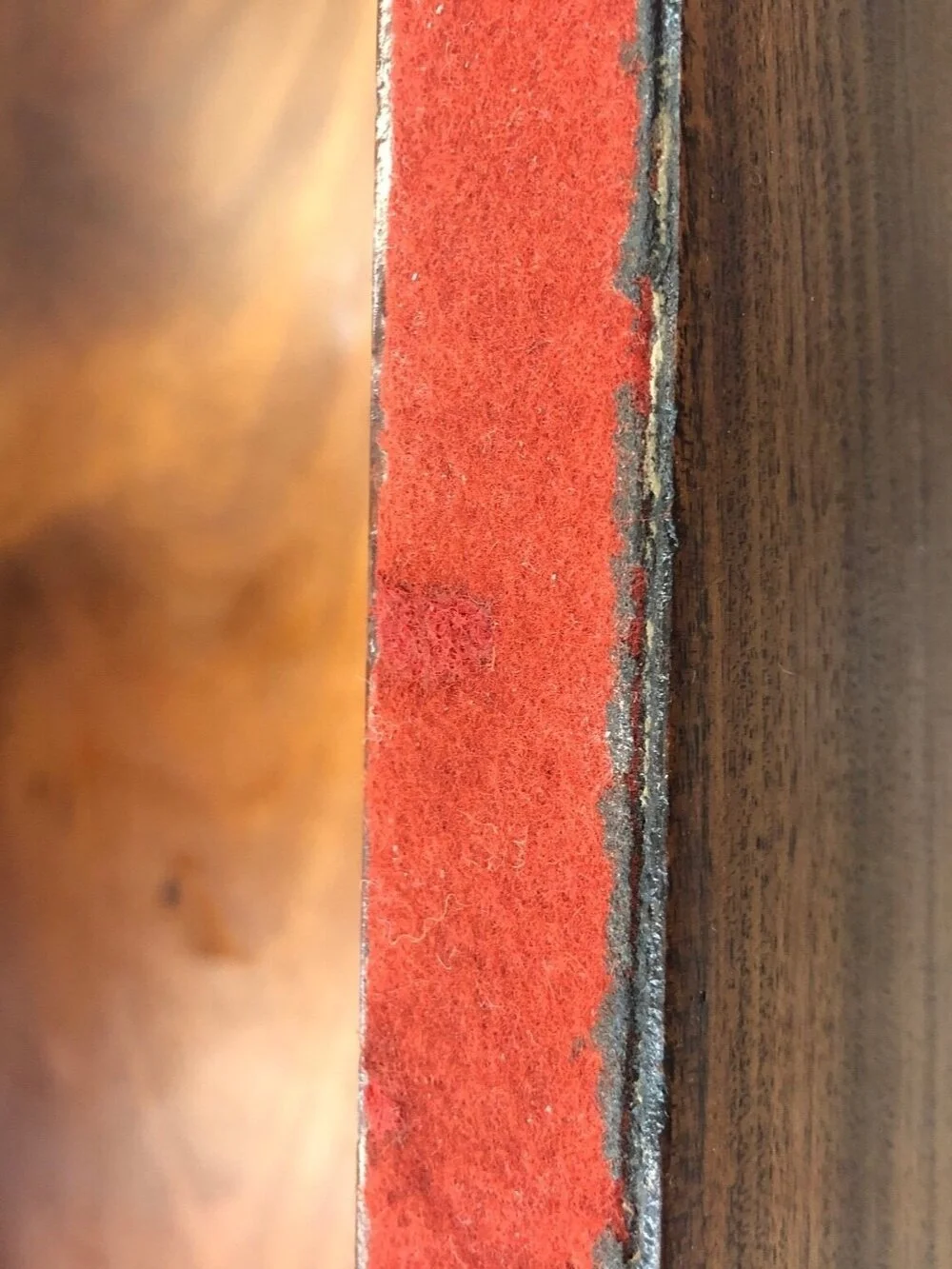Grimm Vienna Clock Regulator Clock Case
(Object ID: 43.155.49)
Project Duration: 66 Hours
Date: 1885
Dimensions: Height: 69.25 in, Width: 25 in, Length: 12.5 in
Materials: Mahogany (Wood), Brass (Alloy), Glass (Material), textile
Object Description: Original clock from the Grimm Jewelry Store. The store was created in Detroit around 1885 and located at 613 Michigan Avenue. The store was moved to Greenfield Village in 1940. Engelbert Grimm was a German immigrant who ran this store for 45 years. He offered mass-produced, inexpensive jewelry and watches to Detroit-area residents. Henry Ford enjoyed visiting the store and talking to the store owner about fixing watches and working with machinery. The regulator would have been a vital piece in the shop, acting as time standard for all clocks and watches sold in the store.
Condition:
Case is structurally sound, however, the finish on the case is severely alligatored on approximately 50% of the surface. A majority of the alligatoring can be found on the entire proper left side of the case, as well as the decorative top and bottom of the clock. The entire proper right of the case has experienced significant bleaching due to consistent UV exposure from its positioning on the wall within the Grimm Jewelry Store until 2015. Half of the front of the case is moderately bleached.
On the base of the case, a previous wood fill has deteriorated and must be replaced. Three other locations on the clock also need fills (Proper left edge of decorative top, hairline crack on upper front of case, middle of front of case)The mating surface between the door and the case is lined with red felt. Five locations of the felt have noticeable losses and need replacement. Hooks and screws on sides of the case are tarnished. At the bottom of the case, a small piece of bracing has become detached. At the base of the door on the proper right, two pieces of veneer are slightly lifting.
Treatment:
All surfaces were vacuumed to remove any dust. Using a UV lamp, it was determined that the varnish on the case was Shellac (with it positively showing yellow/orange under the light). A solubility test with ethanol was performed on a small section of the case to test the Shellac. Once ethanol proved to remove the Shellac, all exterior Shellac was removed from the case using cotton cloths, fine steel wool, and swabs. Once entirely removed, General Finishes gel stain (in shade Brown Mahogany) was selectively applied to the bleached sections of the case. One coat of the stain was applied to the front of the case, and two coats were applied to the proper left side of the case due to more excessive bleaching. Once completely dry, two coats of General Finishes oil based Gel Topcoat (in satin finish) were applied to the exterior of the case.
Wax fills were performed on all four areas with voids, using a range of brown tinted waxes to best match the original wood. All hardware was polished using a cotton cloth and swabs. The red felt voids were replaced with new red felt. The new felt was additionally painted with red and brown watercolors to better match the original. The lifting veneer pieces at the bottom were reattached by reactivating the original adhesive, using heated Medium Density Fiber board blocks.
Losses in the felt lining were filled using replica felt of a similar thickness and color.





